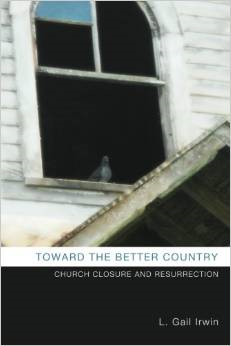 The local Jehovah’s Witness knocked on my door again yesterday. No, I didn’t draw the blinds and turn off the radio. Actually, Lori and I have become friends over the years. She comes every few months and we talk in my doorway. She knows I’m an ordained minister, and that I’m never going to join her church. But she keeps coming. We don’t talk theology, but we do talk about our faith. This time I told her about my research on congregations facing downsizing and closure.
The local Jehovah’s Witness knocked on my door again yesterday. No, I didn’t draw the blinds and turn off the radio. Actually, Lori and I have become friends over the years. She comes every few months and we talk in my doorway. She knows I’m an ordained minister, and that I’m never going to join her church. But she keeps coming. We don’t talk theology, but we do talk about our faith. This time I told her about my research on congregations facing downsizing and closure.
Lori told me something I never knew about Jehovah’s Witnesses. When their communities get to be 120 members in size, they split into two, the way bees swarm and start a new hive. She says when you get more than 100 people in a church, it gets harder to know and support everyone in their ministry. Once the split has occurred, both worship groups may meet in the same building, but they meet at different times.
I guess that explains why you never see a Jehovah’s Witness mega-church.
Jehovah’s Witnesses don’t hire paid clergy. So it’s important for each member to take responsibility and accountability for doing the ministry. I can understand why this would be easier in a small group of 60 or 80 than in a group of 200 or 1,000.
I first formed my respect for the Jehovah’s Witnesses when I lived in San Francisco. In the morning when I rode the Muni downtown to my job, I would see two Jehovah’s Witnesses standing outside the transit station, every day without fail, silently holding up their Watchtower magazines. They didn’t yell or approach anyone. They were just inviting us to read their message. I never once took a magazine, but I was always impressed with their steady, patient presence. While I don’t buy their message, I respect their tenacity in sharing it.
Lori knows she’s never going to change my theology, but she comes to visit anyway. And I am always happy to see her. One time, I ran into her at the Dollar store, and she asked how I was and offered some unexpected words of wisdom, even though she was “off duty”. I realized that day that Lori is the real McCoy: a genuine, full time Christian. Yesterday she said, “I’ve never gotten much book learning. But I try to read the bible and take its truth to heart.”
How can you argue with a person like that?
So yesterday, she offered me her magazines, as usual. I’ve tried to read them, but they leave me cold. I looked at them doubtfully and asked, “If you give away more magazines, do you get more points in heaven?” She smiled patiently and said “No.”
What is the Church? Lori is. It is interesting to me that her faith is being formed in a small, pastor-less congregation. God bless you, Lori!





